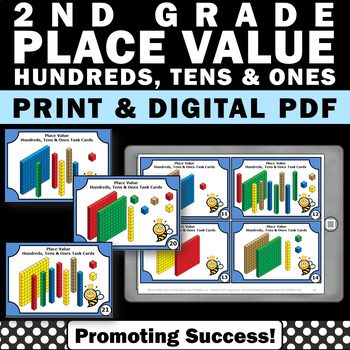Top 10 Autism Help Strategies
Autism is increasing at an alarming rate. The Centers for Disease Control and Prevention stated that the prevalence had increased to 1 in every 88 as of March 2012. While the cause of autism is still unknown, there are specific strategies that have been identified as most effective. Here are the top five most effective strategies.
1) Visual Schedules
Research clearly shows the successful results of implementing visual schedules with children. These schedules allow daily routines to be predictable, with clear expectations. Fear of the unknown causes anxiety. Children with autism or other special needs have a difficult time communicating their feelings of anxiety. Frequently this anxiety is demonstrated in negative or inappropriate behavior. Care givers must keep in mind that all behavior is communication.
Establishing and following a visual schedule reduces unexpected events or situations and assists children in predicting and preparing for transitions. Schedules themselves must be predictable. They are best as visuals, even when the child is able to read. A written schedule may be implemented later with caution and careful progress monitoring. In addition, they should be kept in the same location at all times. There are several resources and software programs that assist with schedule creation and universal graphics.
Children must be taught how to read and interpret the visual schedule. A "check schedule" transition cue is used to communicate to the individual each time he or she is to transition to a new activity. Visual schedules are effective at school and at home.
2) Environmental Considerations
Visual and auditory stimulation in the classroom and home must be taken into consideration. The classroom should be organized and predictable. The scissors should always be found in the same location. Homework is turned in in the exact same way each day. This is important in the home as well. The child's personal belongings have designated "homes." For example, a backpack is always found on the same hook. A favorite toy or book is on the same place on a book shelf.
Auditory stimulation must be examined as well. Do the chairs make a screechy noise as students move around? Is there a slow hum to the lighting? Is the fluorescent lighting too bright? Will a lamp set a different, calming mood? These considerations will vary from child to child; however, all visual and auditory stimuli must be examined. Be sure to think outside the box. Would a blue room be more calming than a yellow room?
3) Visual Structure
The environment needs to be organized visually to help children identify and comprehend what is expected of them. Color coded folders for each content area may be coordinated with the visual schedule. Clearly defined areas, such as work stations, tape on the floor, and labeled centers provide structure. This may be done in the home as well. Some examples include:
· a designated spot at the dinner table
· a visual schedule for bedtime routine
· organized dresser drawers by color and items
· specific containers for each toy
· a daily schedule for weekdays and weekends
4) Alternatives to Verbal Communication
Some children may have significant impairments in expressive communication. Current technology may be very appropriate to increase appropriate behavior and independence. The Picture Exchange Communication System (PECS) has been very effective. This is a system developed in 1985 that allows children to initiate conversation. It is not expensive and doesn't require complex equipment.
Other options include voice output communication devices. This is a very exciting area with all the latest technology and apps being created. Some devices are quite large and more durable for children who may not understand how to handle something with care. Other devices are so small they may be hooked to a belt loop for easy use out in the community.
Augmentative communication is a great strategy. However, it is important to understand the universal means of communication and ensure the device or method may be implemented with any child or adult, not just school personnel or caregivers. A back up system of communication should be available in case of a device malfunction or misunderstanding on the recipient of the message, i.e. a grocery store worker, a new student, a substitute teacher.
5) Direct Instruction of Social Skills
Many children with special needs will benefit from direct instruction in social skills. Most do not learn interaction skills by simply being placed in social environments. Social skills must be taught in the same direct instructional way as any other academic content area.
Research has shown social stories and social scripts to be highly effective. Social stories target behaviors that need to be modified or reinforced in real life situations. Replacement behaviors must also be taught. Simply showing or telling the child what not to do is not effective. Social scripts are short scripts children learn and practice. For example, everyone uses a very similar social script when greeting a colleague in the morning. Some children must be taught these common scripts.
6) Literacy Instruction
Because many students with autism rely on some form of augmentative communication, even if it is only a backup, literacy instruction is very important. If a student is literate, s/he will be able to communicate at a much higher level than if the child is forced to depend on communications devices that are programmed with limited vocabulary. Literacy instruction should begin at a very early age and continue throughout all school years.
7) Sensory Opportunities
Most students with autism have some sensory needs. Many find deep pressure very relaxing. Others need frequent opportunities for movement. All students should have a sensory profile completed by an occupational therapist or other professional trained in sensory integration. Based on the profile, a sensory "diet" can be created and implemented throughout the day.
8) Consistency
All students do best when the daily program remains consistent with clear expectations. All staff working with students with autism need to be well-trained and must implement the daily program as consistently as possible.
9) Take advantage of student strengths and interests
Many students with autism have particular strengths and interests and these should be taken advantage of in the classroom. For example, if a student demonstrates an interest in trains, the student should have opportunities to read about trains, write about trains, do math problems about trains, etc.
10) Functional Curriculum
Students with autism have a great deal of potential to live and work independently as adults. The curriculum should place a strong emphasis on following a functional curriculum. Skills that emphasize daily living skills, community skills, recreation and leisure and employment need to be incorporated into the curriculum. Students in inclusive settings can follow the regular curriculum, but emphasis should be placed on those skills that are the most functional. Functional academics should always include literacy (reading and writing), basic math, time and money skills. Self-care skills, domestics, recreation and community experiences should also be emphasized. Older students should have formal employment opportunities beginning in middle school.
All children experience more success when daily expectations are consistent and clearly communicated. Administrators, exploratory teachers, para-educators, and other staff must be properly trained and instructed in procedures to maintain structure and consistency. In addition, parents, grandparents, daycare providers, etc., must follow the some routines with consistent behavioral expectations to reduce the child's anxiety.
©2012 All Rights Reserved
Click HERE to sign up for secret sales and free printables
Click HERE to sign up for exclusive coupons and
---------------------------------------------------------
For a checklist of 175+ accommodations, click the picture:
For more information on including students with special needs:
To implement a plan of action:
Autism Help Strategies - 105 Pages!
Here is what you will receive:
WHAT IS AUTISM? 4 FACT SHEET FOR KIDS 14 AUTISM RIBBON 16 10 MOST EFFECTIVE STRATEGIES 17 EFFECTIVE INSTRUCTION 20 STRUCTURED TEACHING: STRATEGIES FOR SUPPORTING STUDENTS WITH AUTISM 25 DEVELOPING EXPRESSIVE COMMUNICATION SKILLS FOR NON-VERBAL CHILDREN WITH AUTISM 39 INCREASING EXPRESSIVE SKILLS FOR VERBAL CHILDREN WITH AUTISM 54 CALMING ACTIVITIES 75 INCLUDING CHILDREN WITH AUTISM IN INCLUSIVE PRESCHOOLS: STRATEGIES THAT WORK 78 EFFECTIVE PROGRAMMING FOR YOUNG CHILDREN WITH AUTISM (AGES 3-5) 90 RESPITE CARE FOR CHILDREN WITH AUTISM 102




































